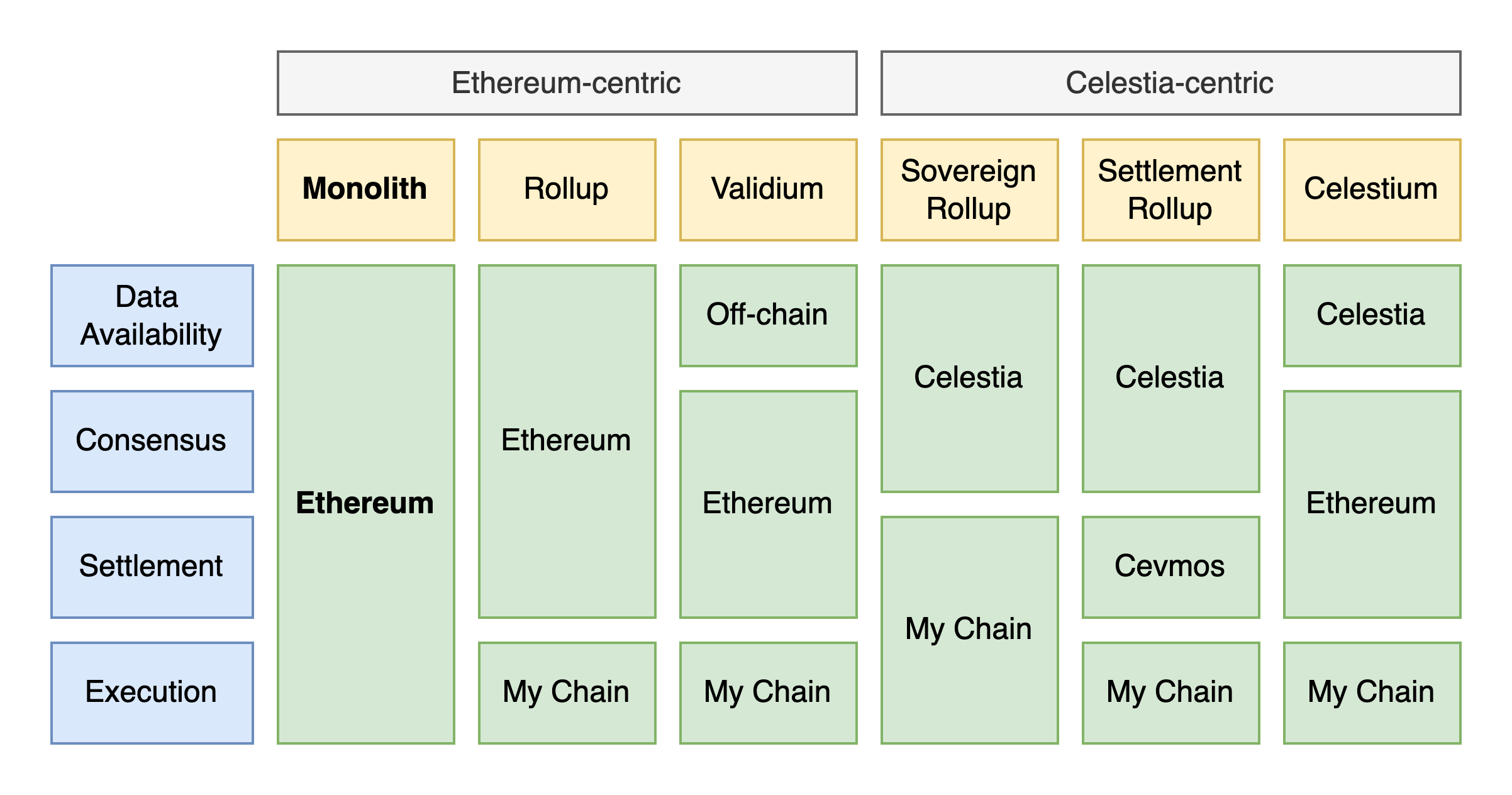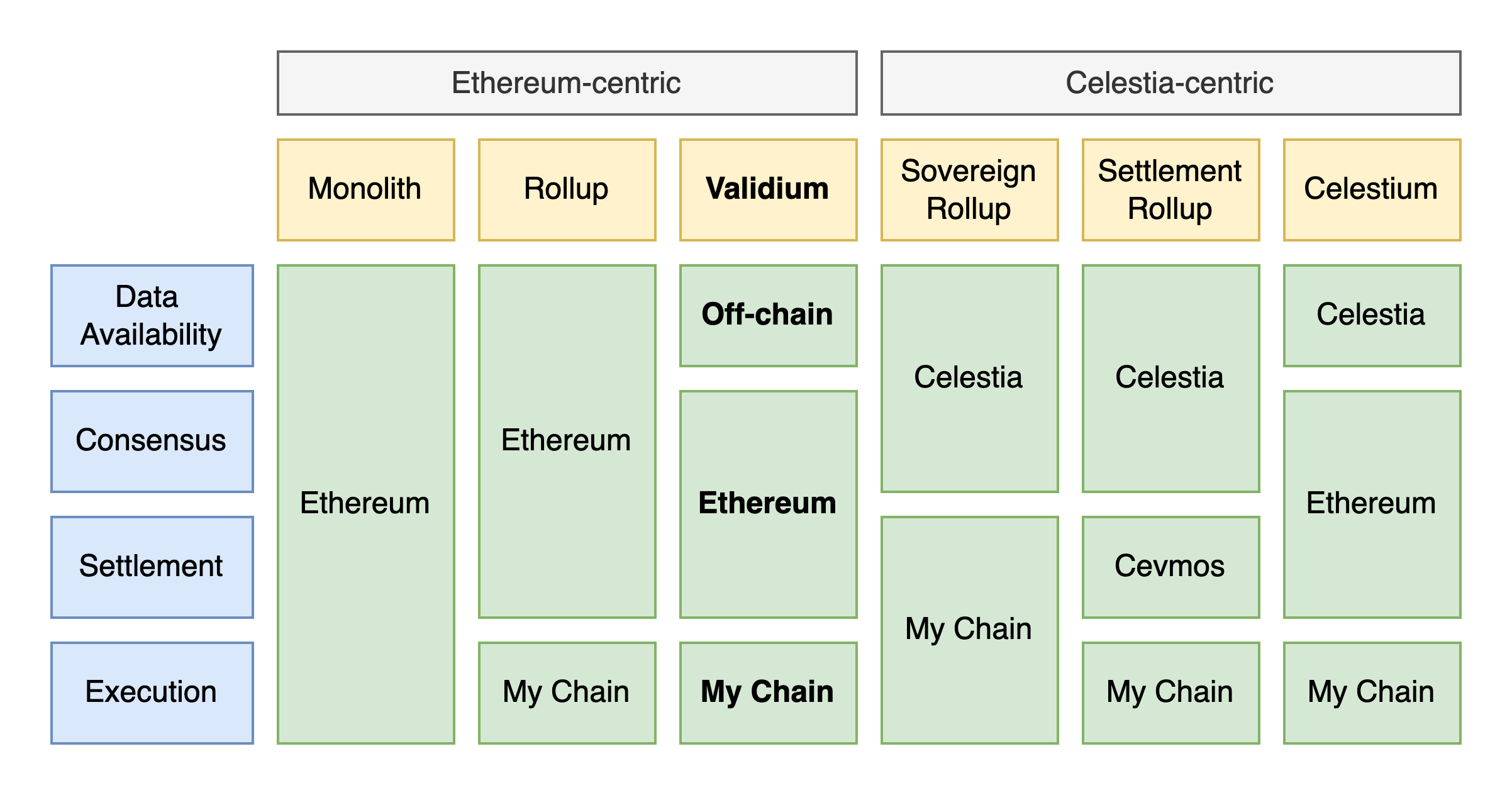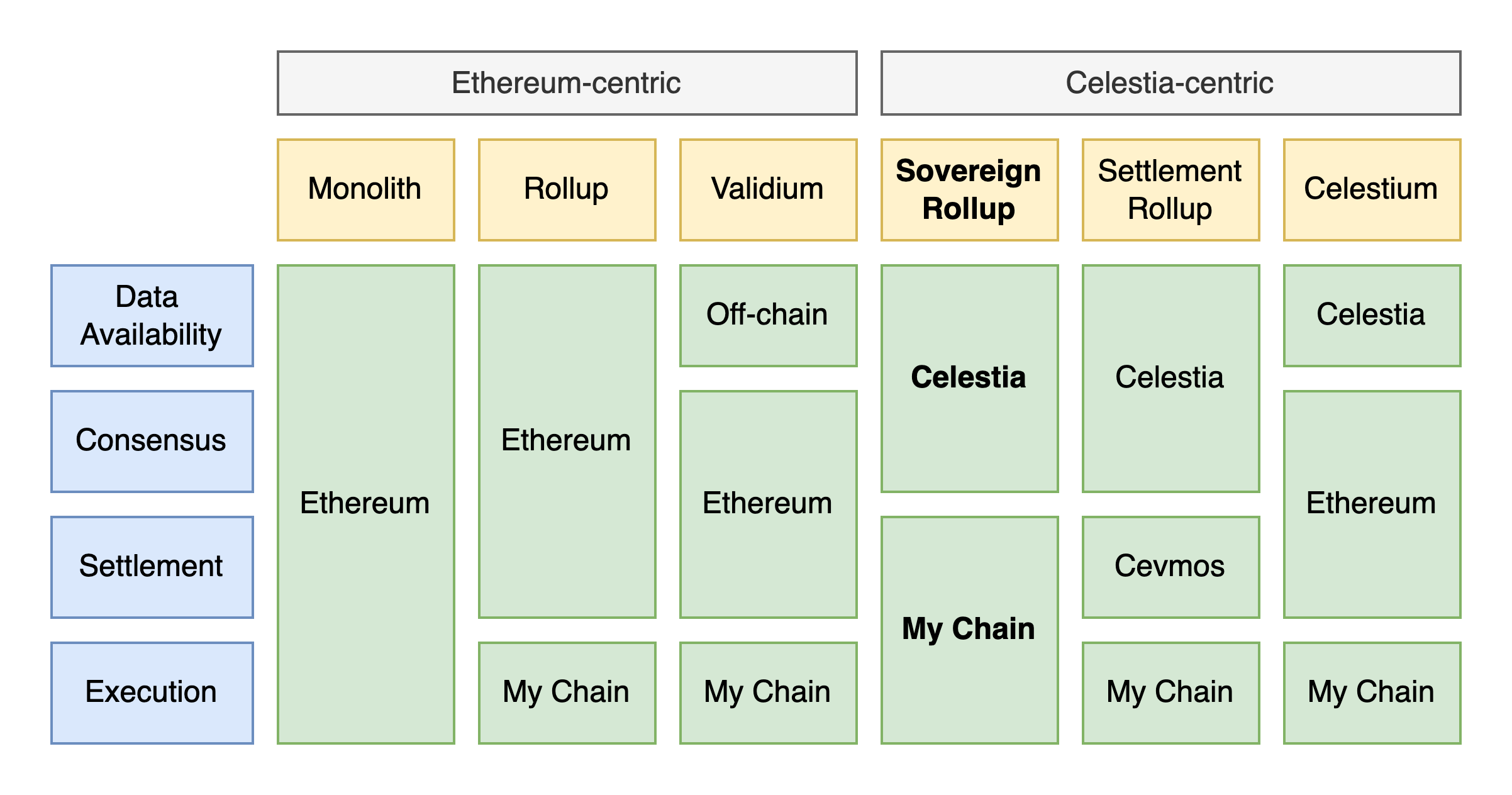A Comprehensive Understanding of Modular Blockchain: How Does Celestia Differ from Ethereum in Stack Structure?
Source: Peter Watts Tweet
Compiled by: angelilu, ForesightNews
Although I have been closely following modular blockchains since @epolynya's earliest tweets, I have just recently grasped the concept of the modular blockchain network Celestia and what can be built with it.
I am not an expert and may have biases in some areas, but I think I should share my notes, which might help others…

I tend to divide the modular stack into 4 layers:
- Data Availability -- Ensuring widespread use of TX data
- Consensus -- Determining the order of txs
- Settlement -- Enforcing global state
- Execution -- Applying individual state transitions
Data Availability + Consensus = the "security" of the chain, both of which need to be stable and solid.
Settlement + Execution = the "environment" of the chain, where execution layers with the same settlement layer can form a trust-minimized "cluster."

In this framework, let’s first quickly review the Ethereum-centric stack that has emerged:
1. Monolith
Everything done on Ethereum, which provides you with the greatest security and simplicity, but it also comes with high costs and limited scalability.

2. Rollup
The initial breakthrough in modular scaling, creating a separate execution layer that anchors back to Ethereum for settlement. Can use fraud (Optimistic) or validity (ZK) proofs.

3. Validium
A modification of Rollup that moves data availability off Ethereum, increasing scalability but sacrificing security. Validium's data availability has data availability committees, guardians, etc., with different trade-offs than Rollup, but with lower security than Rollup.

Enter Celestia, a new blockchain that is explicitly optimized as part of the modular stack, focusing entirely on data availability and consensus.
After looking through blogs and forum posts, it seems that three main variants have been proposed so far:
1. "Sovereign Rollup"
The initially proposed model leveraging Celestia has a single execution layer on top. In this design, operators "Rollup" transactions and publish them to Celestia. However, wait, if Celestia does not execute, where does the settlement happen?

It turns out that a separate settlement layer is not actually needed. It is only necessary when you want to bridge with trust minimization between layers, which is very relevant to Ethereum L2 but not to a "sovereign" chain that can perform fraud or validity proofs internally.
This surprised me at first because my only experience was with Ethereum L2, where "Rollup" is always combined with "settlement." But in the context of independent chains, Rollup can also be useful, for example, this is essentially what Mina does.
2. "Settlement Rollup"
This gives rise to "Cevmos," a dedicated settlement chain located on top of Celestia, where other execution chains can be anchored as part of a single trust-minimized "cluster."

While this enables trust-minimized bridging between Celestia chains, it will be a brand new cluster isolated from Ethereum, so whether it can gain adoption remains to be seen.
This brings us to the third and final design:
3. Celestium
The latest design uses Celestia for data availability and Ethereum for consensus and settlement. In other words, Celestium can be seen as a Validium supported by Celestia.
On one hand, Celestiums might be one of the safest and most economical Validium designs you can get. On the other hand, it is still a Validium.
Since EIP-4844 is estimated to be released by the end of 2022, it is still unclear whether Validiums are worth the trade-off.
This is not a comprehensive overview of the modular scaling approaches of Ethereum or Celestia, but putting everything in one diagram has indeed helped me.








